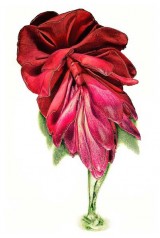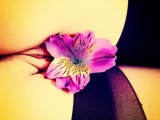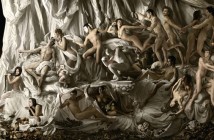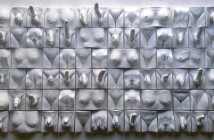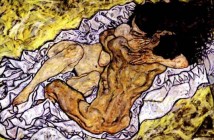The artist Bryon Paul McCartney produced an intriguing series of images based on the symbolical, and physiological, similarity between flowers and female sex organs. The work of this American artist, which lives and works in Switzerland, is currently exhibited in the museum of Porn in Art, Zurich.
McCartney describes his fascination in the article ‘Passion Flowers’: “Is it any wonder that, throughout history, flowers have had close ties with human sexuality and love? They are themselves sex organs on sticks – colorful, flamboyant waving wands of desire. Even women refer to their own sex organs with poetic euphemisms like the fertile delta, love blossom, lotus flower, orchid, panty blossom, passion flower, pink petaled posie, rosebud, tinkleflower, etc. These ideas have, over time, become imbedded into our normal language. We say that a young girl is ‘blossoming’ when her breasts develop and she gets her period, we say that she has been ‘deflowered’ when she loses her virginity, and as she grows old she is ‘wilting and withering away’. You can find similar examples in German or French or other languages”
“Personally, I have always found euphemisms for the vagina/vulva to be intriguing because of the imagery they produce in my mind. In particular, ‘flower’ euphemisms strike a specific chord in my brain. Most other euphemisms seem decidedly masculine, it is as if, culturally, men tend to view the vulva (and likely women as well), not as a thing of beauty, but rather as a piece of meat or flesh, as something ugly. Women seem to prefer to describe their sex organs as beautiful objects of nature, and it is true, there is an inherent visual eroticism in flowers. They mimic and reflect our own sex organs, and putting them, literally where our language places them, seems a perfectly natural thing to do. Visually, they make a perfect combination and it is easy to see why a woman might prefer a ‘passion flower’ to a ‘cunt’.”
echo adrotate_group(2);



